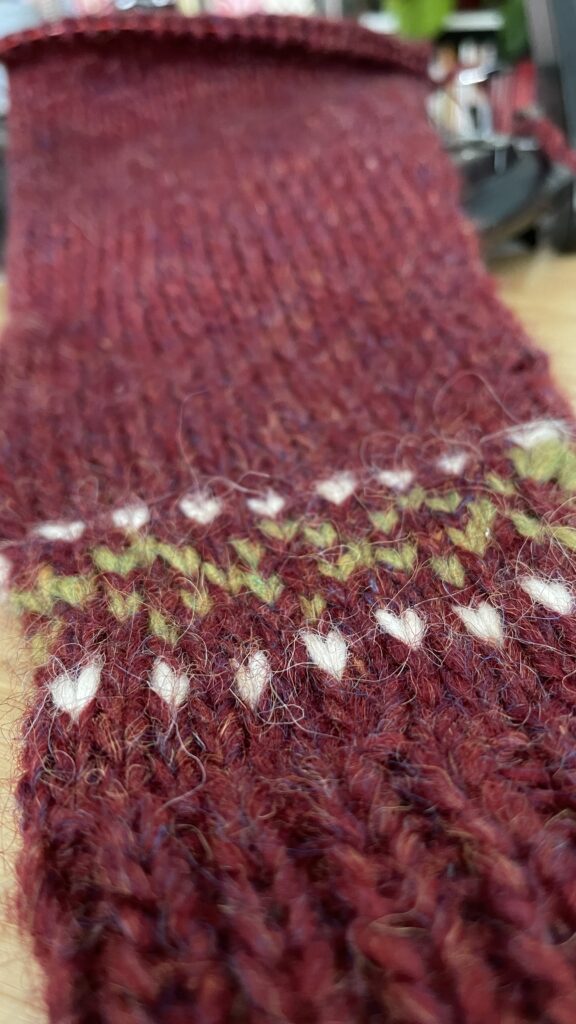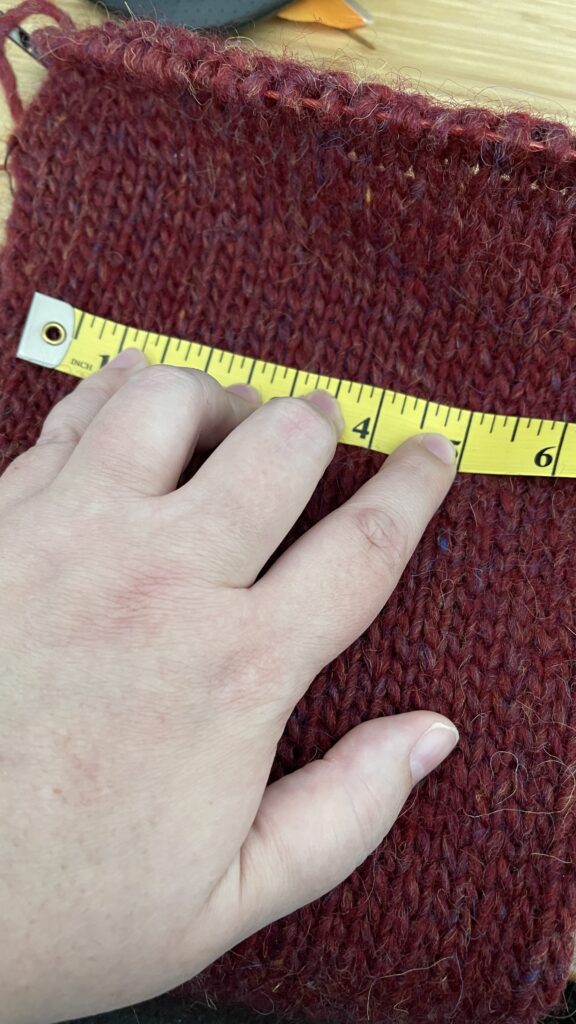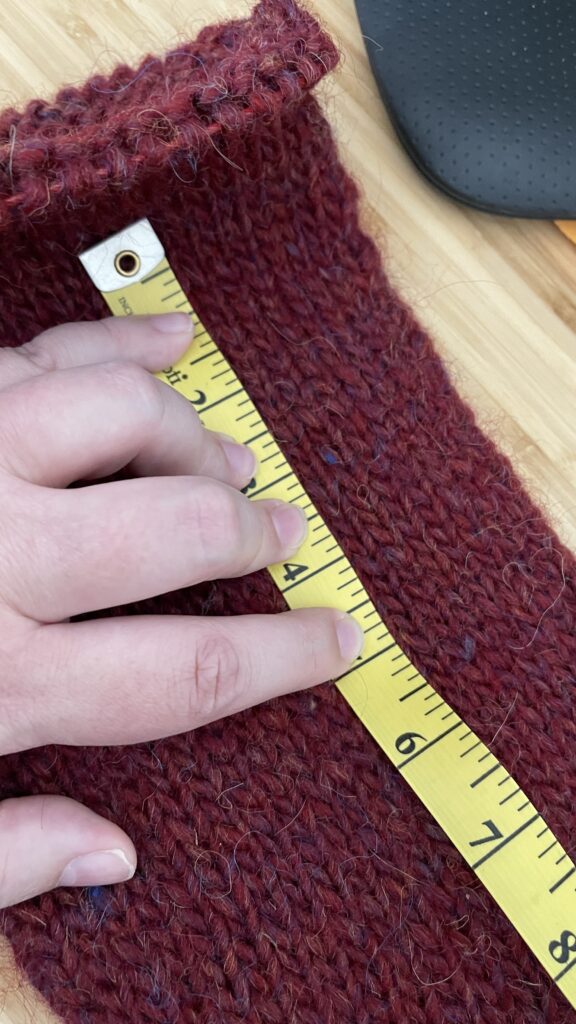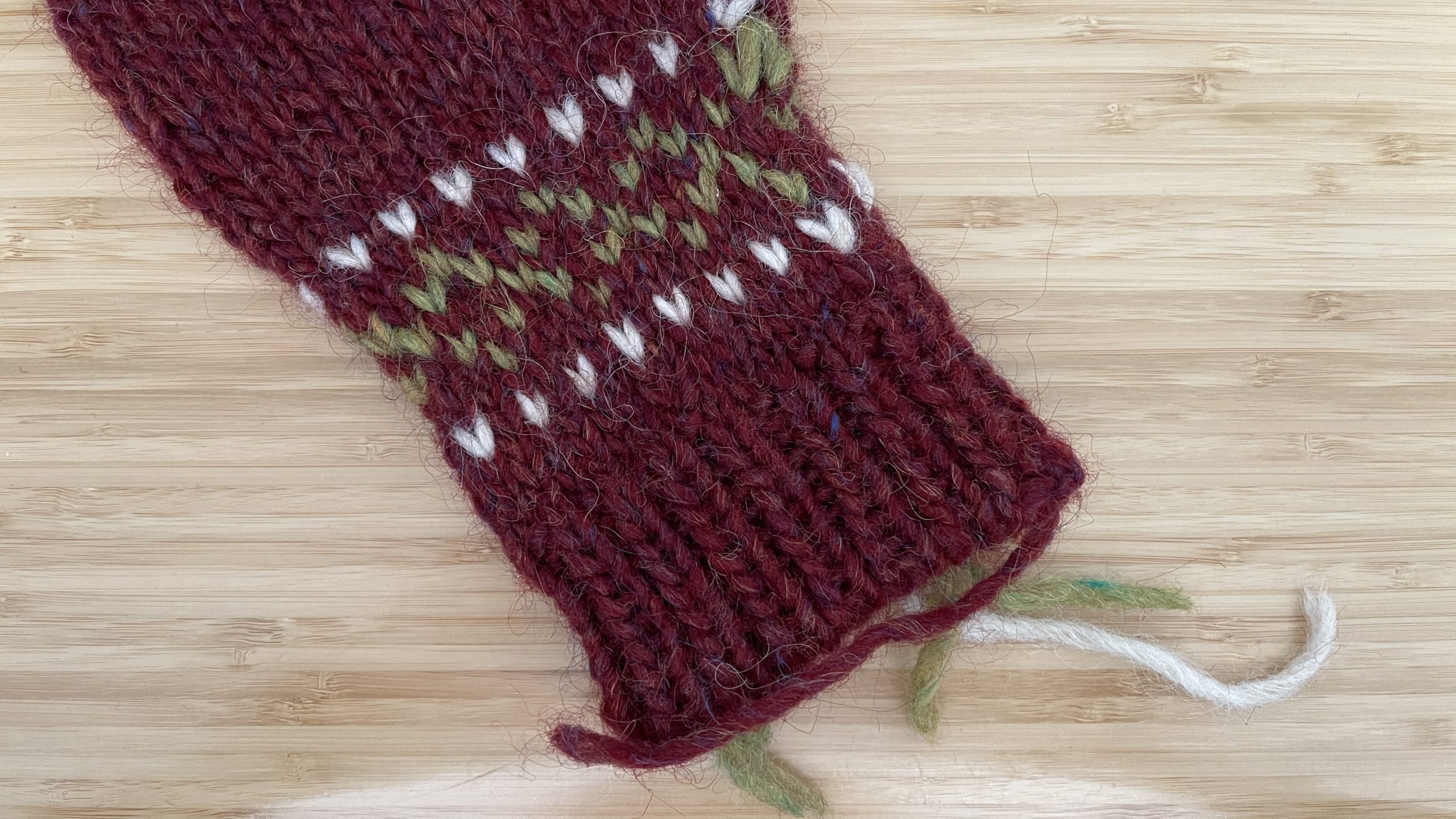Yes, there’s not only second sock syndrome, but there’s also second sleeve syndrome. They are a bit related–both involve knitting the same thing twice, and are tubes. They can also be knit from the bottom up or top down. See? Sweater knitting is just tubes.
But as with sock knitting, sometimes knitting the second tube is really boring. Which is one of the reasons I like bottom up sweaters and sleeve-first plans. It’s a great way to get the kind of boring parts out of the way and you get to end with the fun knitting!

No second sleeve syndrome here
If you’re following along in real time with the lackadaisical Lopi knit-along, over the last week, the first sleeve was knit. And now we’re going to just do it all over again this week.
The beauty of using a bulky weight yarn for a sweater is that it goes so fast. I knit the first sleeve over the last weekend. And I’ll probably knit the second sleeve this weekend too. The trick is to make the sleeves match–yet another reason I like to knit them one after the other.
If you end up changing anything in the first sleeve, be sure to take notes so you can match it in the second sleeve. For my first sleeve, I used the cast-on ribbing that I’d started years ago, for 32 stitches, and then increased to 36 stitches. I worked the rest of the sleeve as written for the largest size, and then knit six more rounds after the last increase. Pretty simple and easy to repeat!
Using your sleeve as a swatch
I’ve written about sleeves as swatches before, here it is in real time. Fresh “off” the needles (read: I took the needles off the interchangeable cable), I measured my stitch and row gauge in three different places to get an average. My stitch gauge, pre-block, averaged 13 sts over 4″ and my row gauge was 17.67 rows over 4″.

After blocking, my gauge measurements read as follows:
14, 13, 14 stitches over 4″ = 13.67 sts over 4″ or ~3.42 stitches per inch
17, 17, 17 rows over 4″ = 17 rows over 4″ or 4.25″ rows per inch.
The pattern gauge is 13 sts over 4″ and 18 rows over 4″ so I’m close enough that I don’t need to go super wild with changing things up. I do want a looser fit than the pattern suggests, and my gauge is a little on the tighter side, despite going up a needle size. So we’re going to the mathing section!

Math isn’t scary, I promise
I’m going to go ahead and figure out any changes I’m going to make to the body, so that I am ready to go when I get to that point. I will still knit the next sleeve first and avoid second sleeve syndrome.
When I wrote up my instructions for modifying Solkatla, I said to look at the chart repeat to determine the number of stitches you’d need at the yoke. This holds true for Sing Winter… but it has four charts. They all build on one another, so I’m slightly changing the rules here to say “look at the chart repeat you’ll knit first”. In this case, that’s chart 1 that has a 4 stitch repeat. Easy peasy.
First I need to know my destination. I want a 54″ chest circumference at the end. I have one sleeve that is currently 56 stitches around, and will have a second one shortly. So that’s a total of 112 stitches right off the bat. I will set aside 16 of those stitches though and save 8 stitches from each sleeve for the underarm. I have 96 available sleeve stitches when they’re both knit.
Determining body stitch counts
With my gauge, to get a 54″ chest circumference, I’d need about 184.7 stitches. I can’t work in half stitches, though, so I can round up or down. Before I decide that though, I need to not forget to remove my 16 stitches from the body for the underarm, and add my available stitches from the sleeves.
Let’s use 184 for some easy math. I’m going to subtract 16 and end up with 168. I’m going to add the 96 sleeve stitches to that for a total of 264. Since the first chart is a 4-stitch repeat, I need to divide 264 by 4 and see if that works out evenly (it does).
If I wanted to err on the side of caution and round up that 184.7, I could quickly divide 184 by 4 (the number of stitches in the chart repeat) and see that it’s an even number. So then I would round up and go to 188, and all of the math after that would still work. OR, if I did all the math and then decided to make sure it would be a bit looser, I could just add 4 t0 264. That would still divide by 4 evenly. I would make a note to cast on 188 stitches instead of 184.
Kick second sleeve syndrome to the curb
This weekend I’ll be knocking out my second sleeve and maybe starting on the body! Or starting on the one holiday gift I’m knitting this year. When you’ve got your sleeve swatch done, if you have questions on working out the numbers for the rest of the sweater, feel free to ask in the comments or on Instagram!


[…] my last post on Lopi sweater knitting, I explained how I chose my size for the body, based on the math from my sleeve swatches. Today […]